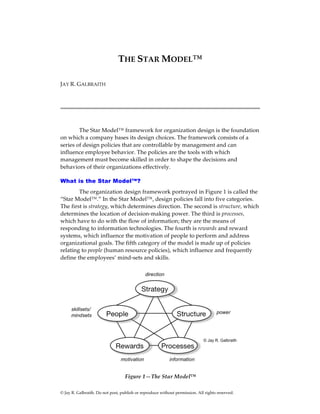The Star ModelTM is a framework for organization design consisting of 5 categories: strategy, structure, processes, rewards, and people. It asserts that an organization's design should align all policies across these categories to achieve its strategic goals. The categories are interconnected like points on a star, and a change in one requires changes in the others. The model provides a holistic approach to organization design beyond just structure.





